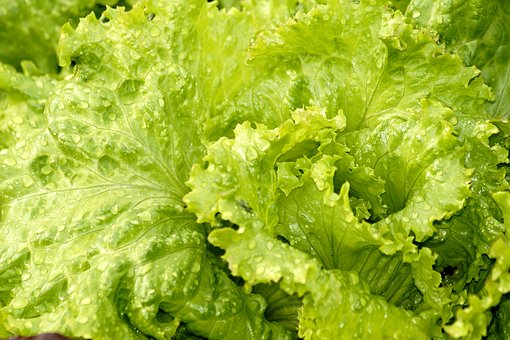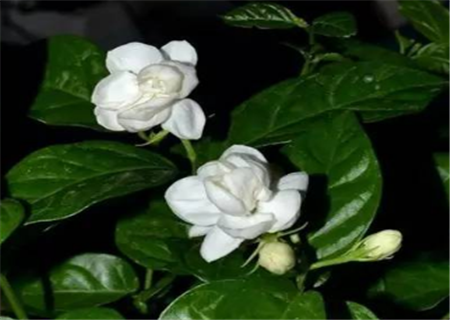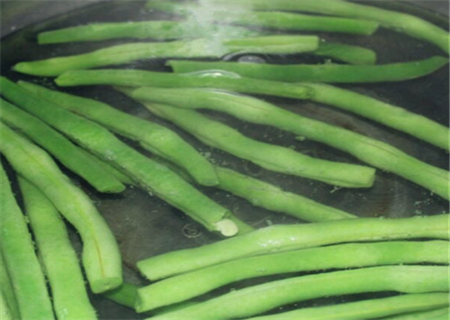When is the season for lettuce sowing? When will it be planted? What are the planting techniques?
Lettuce, also known as lettuce and leaf lettuce, is a common herbaceous crop in 2012 in the southeast coastal area. it is favored by consumers because it contains a variety of vitamins and minerals that have been absorbed by the human body. at present, the planting area of our country is increasing year by year. When will lettuce be sown? When will it be planted? What are the planting techniques?

I. soil selection
Nursery seedlings can be planted in the field. The nursery bed soil is 50% garden soil and 50% rotten soil, and 50 grams of urea and 500 grams of superphosphate are added to each cubic meter of bed soil. After mixing and sieving, the seedbed soil is 5 cm thick (when dividing seedlings, the seedbed soil is 10 cm thick).
2. Raising seedlings
The main results are as follows: 1. Seed treatment and sowing time: the spring cultivation is generally from February to April, and the seedlings are directly sowed and sowed in summer and autumn from June to August. When the weather is difficult to germinate, the seeds need to be soaked and sowed under the condition of 15 ℃ ~ 22 ℃.
2. Sowing: before sowing, the seedling bed is watered with sufficient bottom water, and after the water seeps down, sprinkle 0.5 cm thick fine soil, and then sow seeds. Generally, the seeding amount per square meter of seedling bed is 10 grams, and after sowing, the fine fluvo-aquic soil is 1 cm thick, covered with plastic film to moisturize, and 3-5 days after emergence, the plastic film is removed. Summer and autumn seedlings pay attention to rain protection and sunshade cooling. The nursery bed temperature was controlled at 18 ℃ ~ 20 ℃, and the seedling growth was disadvantageous when the night temperature exceeded 15 ℃. When the seedlings grow a true leaf, the seedlings can be divided according to the row spacing of 6 cm and 8 cm, and the thickness of the seedling bed soil is 10 cm. During the whole seedling stage, high temperature should be prevented from causing slender tall seedlings and ossified seedlings with small leaves and short Hypocotyl formed under drought conditions.
III. Colonization
Lettuce is a shallow root system, which relies on fibrous roots to absorb nutrients, which requires good soil permeability. Before planting, fertilize the soil first, apply 5000 kg of rotten high-quality soil fertilizer and 20 kg of compound fertilizer per mu, plough 15-20 cm after general application, and then make a 1-meter-wide high border with a height of 10-15 cm. In order to increase the ground temperature in winter and spring, plastic mulching and baking land was 15 days ahead of schedule, and the seedlings could be transferred and planted when the local temperature was stable at 8 ℃.
When planting, long-leaf lettuce can be appropriately denser, the row spacing is 20-25 cm, and the row-plant spacing of heading lettuce is 30-40 cm. Planting with dirt. The planting depth should be flat between the ground block and the ground plane. Pour water in time after planting to slow down the seedlings quickly. Generally, 6 days after planting, the seedlings can be delayed to survive.
IV. Field management
After slowing down the seedlings, they can be fertilized and watered. Heading lettuce can be properly squatted for 5-7 days, and then topdressing watering, 10 kg of urea per mu, topdressing with water to keep the soil moist. In addition, 0.2% urea and 0.2% potassium dihydrogen phosphate should be sprayed on the leaf surface of lettuce in the early stage of inner roll of heart leaf.
Lettuce is not resistant to high temperature and humidity. When the temperature exceeds 25 ℃, ventilation and shading measures should be taken. At the same time, lettuce is afraid of waterlogging, so there is no water in the border, and it can be drained in time after rain. After the hot summer rain, it must be watered with cold water in time.
In the middle and later stages of lettuce growth, in order to keep rosette leaves and globular leaves clasping and grow rapidly, it is necessary to provide continuous and uniform water supply so as not to cause leaf ball cracking or bulb opening and growth. Potassium deficient plots, pay attention to topdressing potash fertilizer in this period. Stop watering 5 days before harvest.
5. Timely harvest
The leaves are fully grown, the leaves are green and thick and crisp, and the harvest yield and commodity value are high at this time. If the heading lettuce presses the leaf ball hard, it has a certain bearing capacity, and the leaf ball is harvested when the tightness is moderate. The method of harvesting is: long-leaf lettuce, large leaves can be picked and leaves can be left, and the picked leaves can be put on the market and the whole plant can be cut off. When the heading lettuce is harvested, it is cut from the ground, the outer old leaves are removed, and 3 or 4 outer leaves are retained outside the leaf bulb to be packaged and listed on the market.
VI. Pest control
1. Diseases:
(1) downy mildew
① symptom: damage to leaves. The diseased leaves have yellowish disease spots, white mildew on the back of the leaves when it is wet, continuous disease spots in the later stage, and yellowish brown dry leaves when dry.
The transmission route and pathogenic conditions of ②: fungal diseases, seeds and diseased plant residues can carry bacteria, and bacteria can be transmitted by wind and rain. Bacteria can invade the plant directly through the epidermis or stomata. When the temperature is 15 ℃ ~ 20 ℃, it is wet and overcast and there are water layers or water droplets on the surface of the plant.
③ control measures: implement more than two years of crop rotation, select disease-resistant varieties, prevent high humidity in the field, prevent the use of 50% carbendazim wettable powder, 50% metalaxyl wettable powder has a better effect at the initial stage of the disease.
(2) Stem rot
① symptoms: damage to leaves and petioles. The leaves and bulbs show wet festering and have reticulate hyphae. The petiole near the ground has brown necrotic spots, overflowing with brown juice when wet, brown sunken spots when dry, and sometimes brown sclerotia.
② transmission routes and conditions: fungal diseases, diseased plants, seeds, soil can carry bacteria, bacteria spread by Rain Water, irrigation water, field operations. The fields with high air humidity or stagnant water are prone to disease when the temperature is above 20 ℃.
③ control measures: select disease-resistant varieties, select seeds with 10% salt water, strengthen field management, prevent high humidity and partial nitrogen, and spray 1500 times of 50% Sukeling (trade name: Pythium) wettable powder.
2. Insect pests
Lettuce has insect pests such as aphids, thrips and ground tigers. The control effect of 2.5% imidacloprid on aphids is better, thistles can use 1000 times of 75% dimethoate EC, ground tigers can be trapped and killed by grass heaps, and 90% trichlorfon can be irrigated.
Time: 2019-04-07 Click:
- Prev

Is jasmine suitable for indoor use? What are the fast cutting methods? Matters needing attention in maintenance
Jasmine, also known as fragrant soul, Molly, no, no. It symbolizes purity and elegance. The flower of jasmine is very fragrant, which is a famous raw material of scented tea and an important flavor raw material. Flowers and leaves are used to treat red swelling and pain in the eyes, and have the effect of relieving cough and resolving phlegm. So, is jasmine suitable for indoor use?
- Next

What are the functions and effects of kidney beans in herbs? With balcony planting method!
Kidney bean is another name for kidney bean, and there are many names. It is often called Meidou in the north and also called Meidou in Lanxi, Zhejiang Province. Also known as kidney beans, kidney lentils, April beans, etc., Qingming beans in Quzhou, Zhejiang, and string beans in Sichuan and some central China. What are the effects and effects of kidney beans?
Related
- Fuxing push coffee new agricultural production and marketing class: lack of small-scale processing plants
- Jujube rice field leisure farm deep ploughing Yilan for five years to create a space for organic food and play
- Nongyu Farm-A trial of organic papaya for brave women with advanced technology
- Four points for attention in the prevention and control of diseases and insect pests of edible fungi
- How to add nutrient solution to Edible Fungi
- Is there any good way to control edible fungus mites?
- Open Inoculation Technology of Edible Fungi
- Is there any clever way to use fertilizer for edible fungus in winter?
- What agents are used to kill the pathogens of edible fungi in the mushroom shed?
- Rapid drying of Edible Fungi

